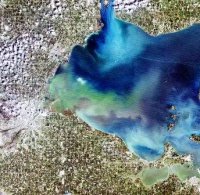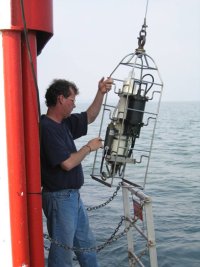SUNY ESF
MERHAB - LGL
MERHAB-LGL is a multidisciplary program to develop monitoring strategies for harmful algal blooms in Lake Erie, Lake Ontario and the Lake Champlain watersheds. The five US/Canadian Great Lakes contain nearly 10% of the world's freshwater and provide drinking water for over 22 million people.
Monitoring and Event Response for Harmful Algal Blooms in the Lower Great Lakes
In the last decade, increased stress on the lower two Great Lakes (Lake Erie and Lake Ontario) and its nearby neighbor Lake Champlain from invasive species and increasing nutrients has resulted in massive cyanobacterial blooms. While not all blooms are toxic, recent research results suggest that the potential for toxin production is present in a majority of blooms. If the responsive species does produce a toxin, then these blooms can dramatically impact both the recreational use and the ability to use the lake as water supplies. Sampling blooms in these large lakes is often problematic due to their size and may require oceanographic-type techniques. MERHAB-LGL is dedicated to both evaluating the extent of the problem and developing monitoring strategies that can be used by end users of the lake. Assistance is also provided to government and local monitoring agencies through their toxin analysis service.

Satellite image of Lake Erie

Canadian Research Scientist Bob Hess sampling on Lake Ontario
